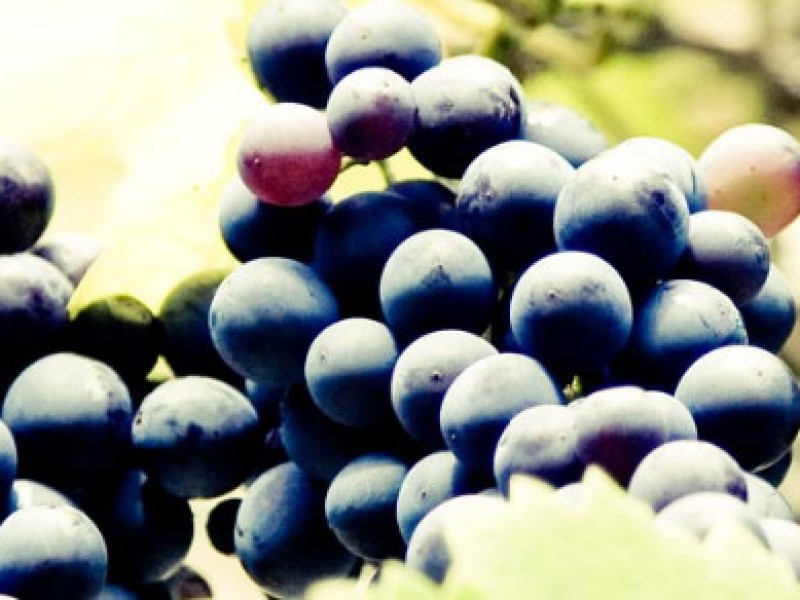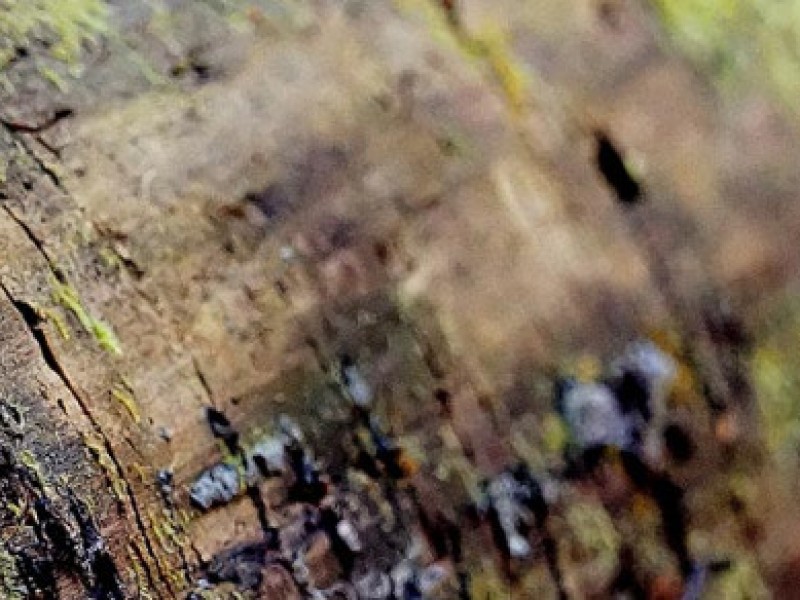History of the Moscheta abbey
The Vallumbrosan Abbey in Moscheta
The Moscheta Abbey was founded by Saint John Gualberto in 1034.
The name Moscheta derives from the area in which the abbey was built, know in ancient times as Mons Ischetus, “mountain of the ischetus”, sweet oak plant, pedunculate oak, which later was shortened to Moscheta.
Saint John Gualberto, who had a numerous community of trustworthy followers, decided to set out on foot from Vallombrosa, his first abbey, in search of a place to found another one. Count Anselmo da Pietramala learned about this journey and offered him one mile of woodland in the area of Moscheta. Saint John Gualberto accepted the offer and entrusted Rodolfo Galigai, his successor in the Vallumbrosan order, with the construction of the abbey of Moscheta.
The symbols of Moscheta
At the entrance of the cloister, we can still see the reproduction of the lunette in sandstone with the symbols of Moscheta: Saint Peter, the pedunculate oak tree, and the porcupine; they represent the spiritual, animal and plant world. Saint John Gualberto dedicated the abbey to Saint Peter, emblem of his fight against simony and the riches of the clergy. It was Saint Peter, in fact, who defeated Simon Magus, the first to sell posts in the church. For the plant world Saint John chose the pedunculate oak tree, Ischetus, which gave the location its name, and is also known as sweet oak because the acorns are sweet; the mountain folk made coffee from it.
The porcupine is the symbol of solemnity, the isolated lifestyle of the monks: it is represented with its quills lowered, possibly in sign of the inevitable domestication of the monks, or perhaps as a sign of their peaceful coexistence, given the silence and isolation of the abbey.
The construction of Moscheta
Historical accounts state that in the years that followed the founding of Moscheta, it underwent two miraculous destruction by two natural processes: water and fire.
The first event took place when the Vacchile River, which flows next to the abbey, caused a landslide that buried the new abbey. The water, it is said, was sent by Saint John Gaulberto who, on returning to Moscheta after two years, discovered luxurious furnishings and monks who did not observe the principals of sobriety of the order.
The abbey was rebuilt with the same stones, but some years later, according to legend, Divine intervention punished the monks again with fire, the traces of which can still be seen today. In this second case the monks had accepted the inheritance of a rich man that had donated his entire estate to the abbey on his deathbed, cutting out his own relatives.
Saint John Gualberto
Saint John Gualberto was the son of a rich feudal family from Chianti. Legend has it that his religious conversion took place on Holy Friday in 1028 while standing in front of the his brother's assassin inside the church of San Minato in Florence. At the very moment that he was about to kill the man, he saw a light that blinded him, and he embraced his enemy, whose image recalled the Crucifix at the moment of the Passion of Christ.
This episode pushed him to become a Benedictine monk in that very church, San Miniato. However, he soon came into conflict with the Abbot and accused the Bishop of Florence of corruption. Forced to leave Florence, he settled in the forest of Vallombrosa, where another well-known miracle took place. On one cold winter night, a leafless beech tree grew leaves to protect him from the cold. The Saint constructed a small village made of huts for other monks. Not much later, the Vallombrosa Abbey was founded on the sight. He became the spiritual leader of the Vallumbrosan order and chose a life of sobriety in contrast with the Church of the times in which simony, that is to say wealth, as well as the selling of pardons and religious posts and relics, was common practice.
The reformative years
Saint John Gualberto had the Moscheta Abbey and the San Paolo in Razzuolo Abbey built on lands that had been donated to him by cardinal Octavius, and San Salvi built in Florence, while the existing monasteries of Saint Reparata in Marradi, and the Passignano Abbey simply became part of the order.
The Saint's fight against the diffusion of simony in the church continued without pause; for example, in 1058, finding himself in Moscheta, he refused to meet Pope Stephen IX who stopped there on his way from Bologna to Florence. His conflict with the simonist bishop of Florence, which led to the San Salvi massacre of 1066, in which many monks were killed by the followers of the bishop, is a well known fact. The church prior, Peter, in the Passignano Abbey, later passed the trial by ordeal of fire in front of two thousand people in Piana di San Salvatore a Settimo, and Pope Alexander II, was forced to remove the bishop from office.
The success of the Vallumbrosan order grew and grew and its principles spread to numerous other monasteries.
On July 12, 1073, after making Rodolfo Galigai head of the order, Saint John Gualberto, remembered as one of the greatest reformists of the church, died in Passignano, where he had been living in retreat for some time.
In 1951, Saint John Gualberto was proclaimed patron of the the Italian forests, given his devotion to the woods and nature.
The miracles of Saint John Gualberto
Some tales talk of the existence of a bear that used to slaughter numerous farm animals in the area of the Moscheta Abbey, and was tamed by the prayers of Saint John Gualberto before being killed by a monk. Other miracles and legends are also attributed to the saint; among these, we find that of the sack of wheat that remains full for days and days, notwithstanding the numerous poor and homeless it feeds. Another legend talks about how, on seeing numerous poor wanderers arrive at the abbey, the Saint retreated in prayer, and about how a herd of cattle on a nearby hill rolled down the slope to their deaths to feed the masses. The Saint was also known to stop storms that were about to destroy the harvest.
The monks and the forest
The forests have always been considered, by monks everywhere, the ideal place to retreat and live an ascetic lifestyle. The tradition was started by Syrian monks who settled in the forest in Monteluco, near Spoleto. In Medieval Christianity, the spiritualism of the desert, typical of oriental doctrine, becomes that of the forest. The Hebrew-Oriental tradition of the desert as a place where temptation and spiritual ordeals abound, converges with the Celtic-Germanic tradition of the forest as a place that lies on the confines, between earth and the heavens, a place that is favourable to experiences and contact with the divine.
In the middle ages monks shared the forest with the mountain folk, laboratores, struggling for it against warriors, bellatores. Coexistence was not, however, simple because, often, on the land that had been donated to the abbeys there existed habits and customs that allowed the mountain folk to survive, and which they recovered any time the order underwent a period of hardship. The land chosen by the monks still holds a singular beauty, is rich in waters, and has what is known today as biodiversity.
Moscheta through the centuries
In the centuries that followed the founding of the abbey, Moscheta saw moments of extreme splendour, and in the 13th century it was considered one of the most prosperous in Tuscany. The monks took good care of the land and the abbey, which grew rapidly, reaching the towns of Luco, Scarperia and Montescalari.
The 14th century witnessed the beginning of the abbey's decline. From the writings of the Abbot general who visited Moscheta in 1372, it can be deduced that the structure was in complete abandonment, and that the abbot had moved to Scarperia: plunderers and thieves continued to pillage it regularly. The great plague of this century had also hit the abbey.
From the first half of the 15th century, a Lay Abbot was designated to the Moscheta Abbey; he was bestowed the abbey and had charge of the estate belonging to it. He did not, however, have say in internal monastic affairs. Bestowing the abbeys, often very profitable, to laymen in whom the church had trust and were rich, and, therefore less likely to steal from it, was common practice at the time. It was useful to maintain control over the estate while gaining approval in the territory. In this way, the abbey saw years of new restored economic splendour, while those of spirituality and charity were put aside. The prestige of the Moscheta abbey was, however, very high: Lawrence the Magnificent himself chose the Lay Abbot from among his loyal followers.
In the 16th century the abbey was abandoned and never again occupied by Vallumbrosan monks. In 1748, during a period of reforms, Gran-duke Leopold prohibited hermitages, and the abbey was put on auction. The money from the sale was used to build the seminary in Firenzuola and the bridges over the Santerno River in Camaggiore, and over the Diaterna River. The new owners transformed the complex into a farm residence until it was finally sold to the State and became a state asset.
Once upon a time in the Moscheta Abbey
The monastic complex was comprehensive of the modern-day structure which holds the museum, part of what is now the restaurant and cemetery. For the construction of the abbey, the monks followed the lines that had been imported from Middle Eastern hermitages. First of all, it was important to insure the nourishment of the monks and therefore a vegetable garden and pens for the animals were built. The structure also included rooms in which to host the poor, the ill and the elderly. The monks were obliged to host, help and feed wanderers for three days. There were also numerous pilgrims who went from one monastery to another in the hopes of fighting hunger.
According to Stefano Casini, there was also a pharmacy that held natural drugs and remedies, which were prepared with herbs found in the garden and in the forest. They were among the very few who could read and write and dedicated much of their time to studying medicine. A fire burned in the fireplace at all times to welcome travellers and cure the ill. They already knew the beneficial properties of honey and beekeeping techniques. The monks wore long robes of wool dyed with walnut hulls, which gave them their typical brown hue. They did not wear belts, which were only introduced in the 14th century and after the coming of Saint Francis.
“They (the monks), finding themselves with uncouth, armed populations who were used to thieving, could do nothing but show charity, helping the poor, abandoned country folk overcome terrible difficulties, and instilling love in their studies of agriculture.”
The monks taught the people of the area how to work the land, giving the families a part to work directly so they would not abandon these rugged mountains. According to some, they introduced the principal of small land owners, renting the land infinitely to those who would never have been able to purchase it otherwise. Initially, the characteristics of the location were fit for pastures only, but slowly the monks were able to work the land and sow it. Thus the production of chestnuts began (some of the trees in the area stem back to that era), passing down trimming and pruning techniques, that is to say the gathering of fresh offshoots, used for farm animals during the long winters. They planted evergreens, possibly to remember the mother house in Vallombrosa, or maybe as a symbol of isolation. Some writings also bear witness to the existence of small vineyards and olive groves. They also hosted the poor and the ill and were a point of reference for wanderers, to whom the safest roads and trails were laid out. The main part of their income went towards funding acts of charity, like the running of hospitals in Frena, Rifredo, Pietramala, Monzuno and Cornio. Some of these structures were later turned into shelters for wanderers, but this activity, too, was considered charity, so much so that the monks in Razzuolo were allowed to cut wood for the inn in forests where it was not usually permitted.
Mugello in a nutshell
Discover Mugello in your next holiday in Tuscany, suggestions for spending 1, 3 or 5 days in Mugello
Mugello guide books
You can download the guide books. Discover Mugello in your next holiday in Tuscany!























